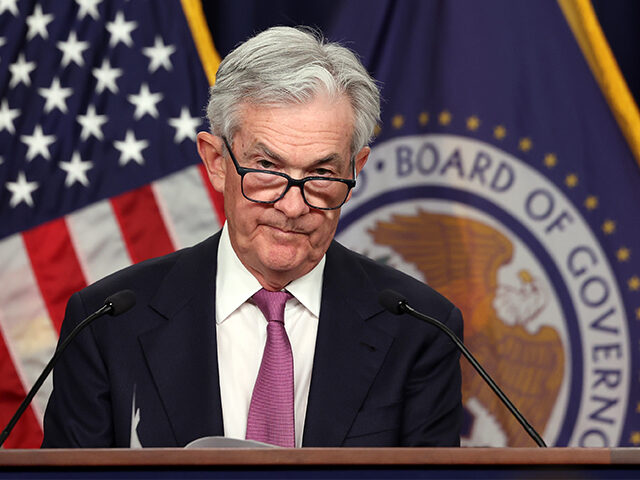No Opening for Fed Cuts in Revised GDP
While the economy’s growth pace in the third quarter might not have sprinted as fast as initially estimated, the nuances nestled within the data reveal critical insights that challenge any premature expectations of aggressive Federal Reserve rate cuts in the near term.
The second estimate of real gross domestic product (GDP) growth in the fourth quarter of last year was expected to be unchanged from the first estimate, which had shown the economy growing at an annualized pace of 3.3 percent. On Wednesday, however, the Commerce Department said it had revised down the growth rate to 3.2 percent.
To put this in perspective, this is still a much faster rate than Wall Street was expecting prior to the release of the initial estimate in January. The consensus view was that GDP would be reported as growing at a two percent pace in the final three months of 2023.
The slight downgrade in fourth-quarter growth did not change the full-year numbers. The economy grew 3.1 percent on a fourth-quarter-to-fourth-quarter basis and 2.5 percent on a full-year basis, which is the more common way of reporting GDP in the United States. (Both are reasonable ways of looking at GDP growth.) That’s a solid performance and much more growth than the Fed thinks is sustainable over the longer term.
Nominal growth was revised up for the fourth quarter, from 4.8 percent to 4.9 percent. To put that in perspective, the average nominal rate of growth from 2010 through 2019 was 4.1 percent. The average during Trump’s presidency prepandemic was 4.8 percent. So, we’re seeing nominal growth that is above average by recent standards.
U.S. Consumers Still Shopping, Not Dropping
Household spending—the lynchpin of the economy—grew even faster than initially estimated, rising at a three percent rate instead of the 2.8 percent rate initially reported. It contributed about 62.5 percent to the fourth quarter’s growth, up from 57.9 percent in the earlier estimate. We already knew consumer spending was a big driver of economic growth in the second half of the year. Now we know it was even bigger than we thought.
The mix of consumer spending was revised in ways that are not particularly friendly to the disinflation narrative. Household spending on goods rose at a 3.2 percent real rate, down from the initial estimate of 3.8 percent. This was driven by a big decline in the growth rate of spending on durable goods, which fell from 4.6 percent to 3.2 percent. As a result, durable goods purchases accounted for just 7.8 percent of the growth, down from 10.9 in the earlier estimate.
The pace of services spending growth went the other way. The revision took it from 2.4 percent to 2.8 percent. As a result, household services spending is now seen as accounting for 40 percent of the overall growth in the fourth quarter, up from 32.1 percent in the earlier estimate.
This is evidence that consumer spending has continued to shift from goods to services. It suggests that there is probably not much more disinflation to come from that shift. Indeed, it is likely now a contributor to inflation because it means there is more demand pressure on the harder-to-expand services sector.
Mother’s Milk of Economic Growth: Nonresidential Fixed Investment
Adding to the impression that the revisions indicate stronger economic fundamentals, one of the softer parts of the first estimate, nonresidential fixed investment, was revised up from the slight 1.7 percent to a respectable, if not overly impressive, 2.4 percent. This suggests that businesses were not pulling back on their growth plans in the fourth quarter of last year, even if they were wary about overbuilding inventory.
There were also important upward revisions in some of the indicators of underlying demand. Final sales of domestic product rose 3.5 percent, up from the January estimate of 3.2 percent. Final sales to private domestic purchasers were revised up to 2.9 percent from 2.6 percent, suggesting that underlying aggregate demand held up very well in the fourth quarter.
Finally, there were small upward revisions to inflation. The personal consumption price index rose 1.8 percent from the preceding quarter, up from the 1.7 percent estimated. Core inflation bumped up from 2.0 percent to 2.1 percent. While these are small increases, they show that the progress made on bringing down inflation in the last quarter was not as large as thought. This implies that prices likely still had more momentum than estimated at the start of this year.
While the GDP revisions do not raise any red flags that weren’t already waving after the initial report, there’s no reason to see the report as creating more room for Fed cuts in the first half of this year.

COMMENTS
Please let us know if you're having issues with commenting.